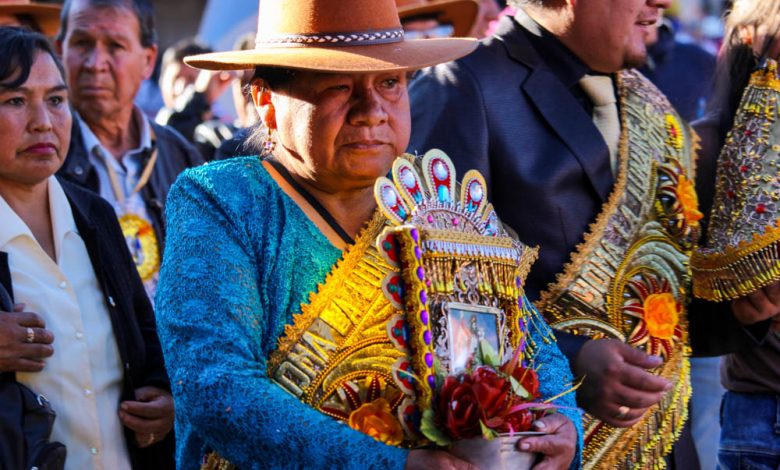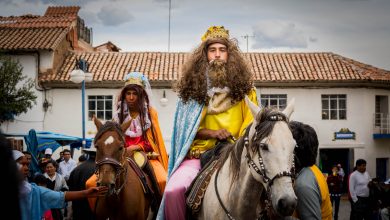The Saints Go Marching, Change and Glory

The saints are marching and Cusco’s traffic is tied up as processions take over streets throughout the city. Yesterday the saints left the cathedral in a great procession which is called the salida, the exit, and today they return slowly to their parishes with all of their devotees and devotion.
Yesterday’s procession was reduced to saints, authorities, some sponsors, bearers and the musicians who play marches and other songs to announce the saints and accompany them always with music.
Each saint’s procession is much expanded today since many more devotees come and they are also now accompanied by all the dance troupes of all the confraternities that are formed around them. The processions can easily be more than a kilometer in length as they return home to the steps of dancers and with frequent stops for devotion and rest.
It is in its whole a majestic process. Nevertheless, the rest of the city tries to go on with its activities, even though with so many saints traffic is snarled all over the city.
It used to be that the dances accompanied the saint around the plaza making a much longer and greater procession, even though it would often last well into the night. I do not know when, but somewhere and sometime recently a decision was made to cut the dances from the procession around the city’s main square whether during the main feast of Corpus Christi or during the entrance and exit. Other days have been added to accommodate the full procession so all the devotees of the different parishes may show their faith and make sacrifices to expiate their sins.

The processions are very impressive, although if you want to see them as a whole there is no longer any point of concentration where they all will appear as their used to be. Now it has been decided that the procession should emphasize the saints as the central moment, although for the faithful that important moment may well be when their family and friends process to and from the parish churches all together with the dances.
Besides emphasizing now the formal religious event, without our mentioning the power of the diocese to decide which are the central events, the decision is curious since it takes the dances from the festive surroundings in the ritual center of the city and makes them peripheral. At the same time the pasacalles, dancing parades and marches of the institutions begin for the Days of Cusco. They will dance around the plaza. Even though the dances are the same they will now be considered folklore, a representation of the people of Cusco, instead of devotion and faith. The Catholic faith purifies itself and cedes ground to folklore.
An older gentleman from Cusco, now retired, talked to me about this today. He claims he now has no interest in coming to see the saints process. He just comes to the center of town, eats his chiriuchu, and goes home. The procession in its current form holds nothing for him.
This statement does teach us the importance of the chiriuchu which for many goes beyond that of religion.
In any case, the saints’ procession now do call attention with their sumptuousness, their complex of sound with all the bands of musicians and kapersos as well as their variety of color and movement.




